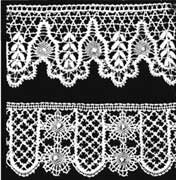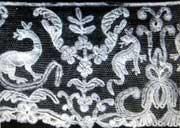LACE TYPES
Needle |
Punto in Aria | Point de Venise | Point de France | Alencon | Argentan | Argentella | Hollie Point | Point de Gaze | Youghal | Limerick Embroidered: Reticello | Buratto | Filet Lacis | Tambour | Teneriffe | Cut Work: Broderie Anglaise | Carrickmacross |
Bobbin |
Antwerp | |Torchon| Binche | Flanders | Mechlin | Paris | Valenciennes |Bayeux | Blonde | Chantilly | Lille | Genoese | Venetian | Bedfordshire | Cluny | Maltese | Honiton | Bruges | Brussels|Milanese | Flemish | Russian |
Crocheted |
Irish crochet | Hairpin | Filet Crochet |
Knitted |
Shetland | Estonian | Icelandic | Danish | German |
Knotted |
Macrame | Tatting | Armenian |
Tape |
Mezzopunto | Princess | Renaissance | Romanian point |
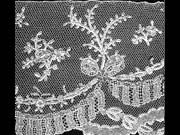 |
Alencon Point An elaborate needle lace produced in France from the 17th century. |
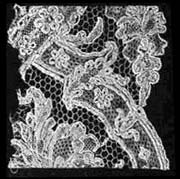 |
Argentan Point A needle lace made in Argentan France. Production started during the reign of Louis XIV and has many common points with Alencon. |
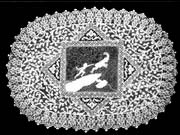 |
The original lace of Belgium is the old Flanders. |
 |
Binche Lace A variety of bobbin laces made in Hainault Belgium. Similar to Valenciennes lace. |
 |
Bobbin lace, very fine, made in Bruges Belgium. |
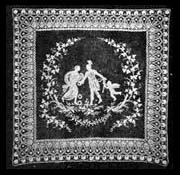 |
Needle laces, among which can be found, Point de Gaze, Belgium. |
 |
Chantilly Lace The majority made of black silk, Chantilly lace was greatly esteemed for French fashion in the 19th c. |
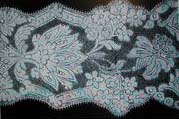 |
One of the finest of all French bobbin laces, Valenciennes lace was first made in the town for which it is named. |
 |
Venice was the European capital for fashion at the end of the middle ages. |
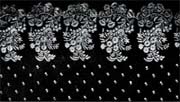 |
Honiton is a small town in Devonshire which gave its name to a very fine bobbin lace in which strong floral motifs are joined to a net background. |
 |
Antwerp, though an old lace-making center, is remarkable for one type of peasant lace, the "potten kant" |
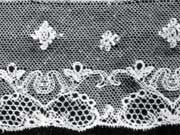 |
Lille & Arras Lace Known for their strengh and low price Lille and Arras lace were extremely popular in England prior to the 19th c. |
|
Le Puy en Velay appears to be the most ancient of the French lace centers dating back to the sixteenth c. |
Both needle and bobbin laces were made in Ireland before the middle of the eighteenth century but never, apparently, on a commercial scale. |
||
|
This is a kind of cutwork where squares of woven linen are cut and removed. |
Milan point was justly celebrated in the seventeenth century. Lace was, however, known and made in Milan at a much earlier date. |

